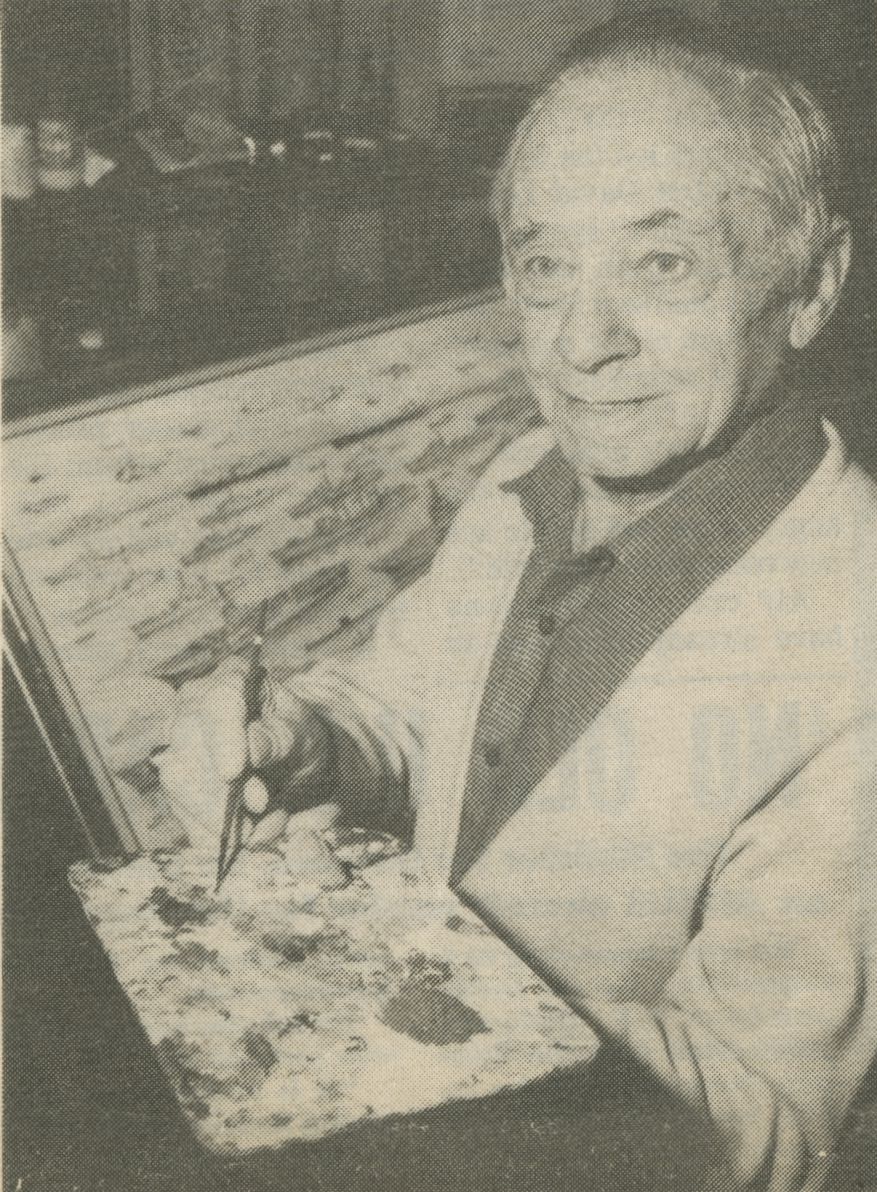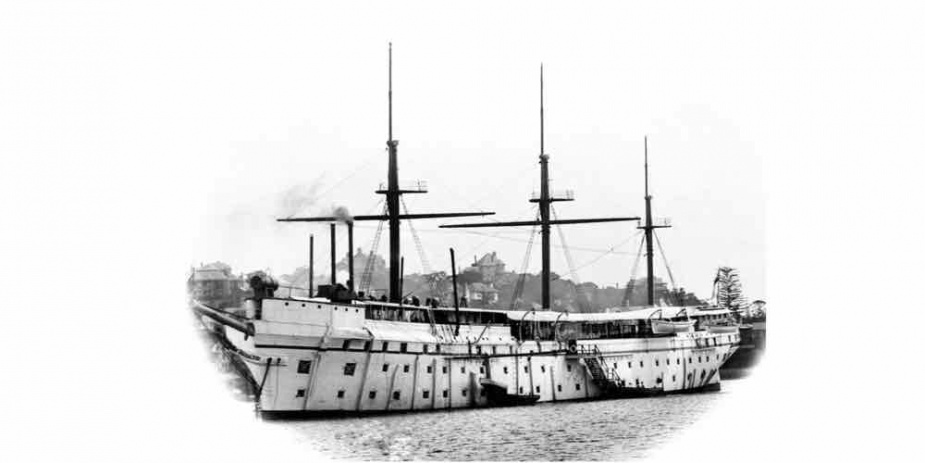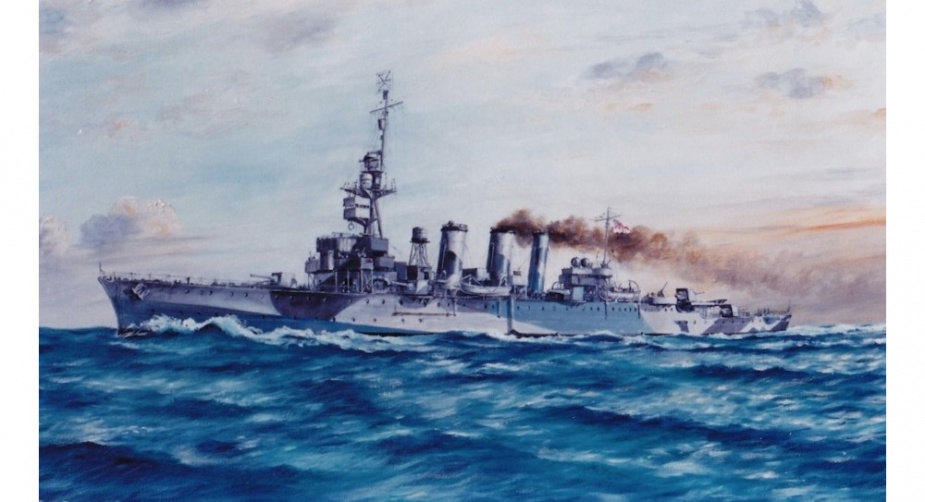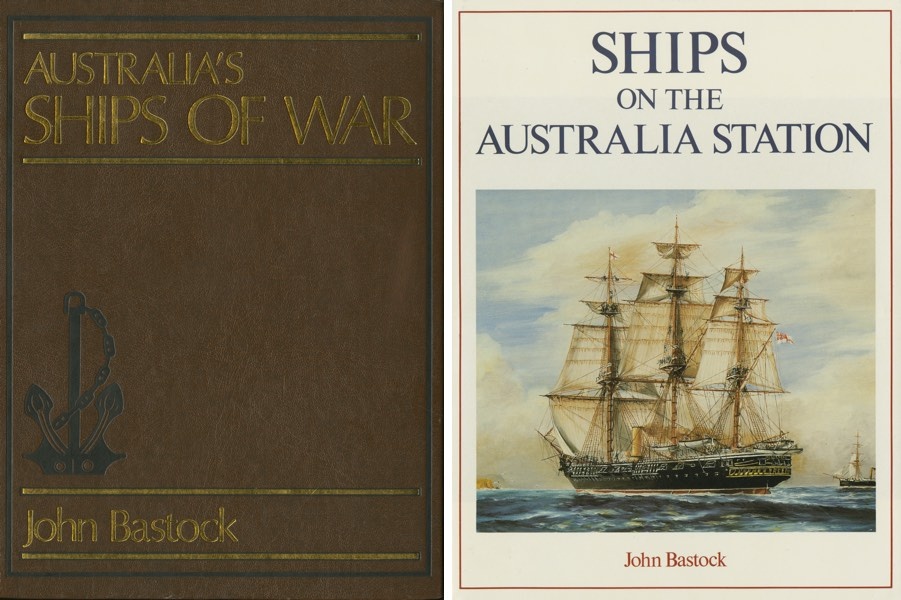Mr John Bastock

John Bastock (1908–1996) was born in Glebe, Sydney, on 18 February 1908. In 1913, when he was 5 years old, he perched on his father’s shoulders to watch the arrival from England, into Sydney Harbour, of the Royal Australian Navy Fleet Unit, comprising the new battlecruiser HMAS Australia, the cruisers HMA Ships Encounter, Melbourne and Sydney, and the three destroyers HMA Ships Parramatta, Warrego and Yarra. John later recalled that from that moment on he knew that he would join the Royal Australian Navy.
As a boy, he was a keen artist and would draw and paint pictures of ships. On completing his schooling he worked as a process engraver – cutting drawings into copper plate for printing. On 29 May 1923, aged 15, he joined the RAN as a boy 2nd class and commenced his training in the boys training ship HMAS Tingira, moored in Sydney's Rose Bay. Tingira, formerly the clipper ship Sobraon, was acquired by the RAN in 1912 and used to train boys between the ages of 14 and 16 in seamanship prior to them joining their first warship. The training was hard and demanding in order to prepare the boys for the rigours of sea service.
John Bastock did well in his training and was promoted to boy 1st class on 1 January 1924. On 26 August that year, he joined his first ship – the light cruiser HMAS Brisbane. In early February 1925, Brisbane departed Sydney and sailed to Singapore, via Western Australia. On arrival in Singapore, the cruiser was attached to the Royal Navy 5th Cruiser Squadron for 6 months service on the China Station. For the young John Bastock, who had never left Sydney before, this was a great adventure.
Brisbane conducted ‘showing the flag’ cruises to Port Swettenham in Malaya (now Port Klang, Malaysia), Hong Kong, Yokohama, and Wei Hai Wei (now Weihai) in China. When at sea, the ships of the squadron conducted gunnery and seamanship training. The visit to Yokohama was the first of an Australian warship to Japan, and the local population provided significant entertainment for Brisbane's crew, including free tram rides to Tokyo. The port visits were, however, not all tourism: on the cruiser's second visit to Hong Kong, its crew was required to provide support to the British administration during a general strike. This included operating the ferry and tram service, maintaining law and order and operating the coal fired power station.
In September, Brisbane returned to Australia, via Tarakan in Borneo, arriving in Sydney in October to a tumultuous welcome from family and friends. John Bastock had been promoted to ordinary seaman while serving in Brisbane, and transferred to her sister ship HMAS Melbourne on 8 October 1925. Brisbane was subsequently placed in reserve and most of her ship's company were transferred to Melbourne.
Melbourne sailed from Sydney in November 1925 for exchange service with the Royal Navy in the Mediterranean and was absent from Australia for almost a year. She sailed across the Indian Ocean via Cocos Islands, Colombo and Aden, arriving at Egypt’s Port Said on 9 January 1926. The cruiser was then attached to the 1st Cruiser Squadron and conducted training and port visits to Malta, Gibraltar and Naples. During April, Melbourne was at Portsmouth for maintenance and this enabled the crew to visit southern England. John was promoted to able seaman in June, and in July the cruiser commenced her return to Australia. Melbourne visited Aden, Colombo, Singapore and Batavia (now Jakarta), before arriving in Fremantle on 13 August and then Sydney on 28 August .
After a short period of leave, John Bastock was posted to HMAS Cerberus (Flinders Naval Depot) in Victoria for training and general duties at the RAN’s largest training base. He had proven to be an intelligent and hardworking sailor, and was selected to train at a torpedoman, which required a good level of education due the complexities of the electrical and mechanical aspects of the weapon. He returned to sea in October 1927, when he joined the cruiser HMAS Sydney; a sister ship to Brisbane and Melbourne.
Sydney was by then in the last year of her illustrious career operating in Australian waters. In early 1928, she was used for the filming of the movie The Exploits of the Emden, by Ken Hall, off Jervis Bay, with many of her crew used as extras. John became a technical assistant to Hall, and was involved in arranging booms to be rigged from the ship’s side to enable filming of the ship's bow wave and propeller wake. He also helped manufacture ‘mines’, which were detonated electrically from the cruiser's motor boat to simulate shell explosions.
On 8 May 1928, Sydney decommissioned and he, along with most of Sydney’s crew, embarked in SS Beltana to sail to the United Kingdom to commission the heavy cruiser HMAS Canberra at Clydebank, Scotland on 9 July 1928.
John's first years at sea were too busy for him to devote much time to his hobby, but during Canberra's delivery voyage to Australia in late 1928, he found time in the dog-watches to take up painting again. He completed many pictures of Canberra – some on art board, others on black velvet – depicting the vessel at night on a moonlit sea, with all lights ablaze. The art board paintings were sold to his shipmates for about two shillings and six pence, and those on velvet for five shillings. John's supreme effort during this period was a large painting on canvas, suitably framed and signed by Captain Massey and his senior officers. The picture was raffled among the ship's company and earned him £15. This painting took weeks of research and concentrated work to complete, fuelling John's lifelong passion for the sea and providing the inspiration for his future career as a naval artist and writer.
He served in Canberra until 23 February 1930. He was promoted to acting leading seaman in October 1928 and confirmed in the rank a year later. During his time on board the heavy cruiser, he undertook a circumnavigation of Australia, in 1929, conducting exercises and port visits to show the new ship to the Australian people. In February 1930, he was posted to Cerberus for training as a torpedo gunner's mate.
At Cerberus, he successfully completed his training as a torpedo-gunner's mate and also became qualified for promotion to petty officer. He returned to Canberra in May 1931, but later that year sustained an injury that resulted in significant loss of sight in one eye. He was offered the opportunity to transfer to the supply branch of the RAN, as an officer's steward, but instead chose to be discharged as below naval physical standard on 18 February 1932. Having specialised in torpedo and electrical work in the Navy, he soon found employment with the electrical branch of the New South Wales Department of Public Works and, later, the Electricity Commission.
Fortunately, his sight eventually improved to such an extent that he was able to resume painting. In the years that followed, he produced hundreds of drawings, diagrams and paintings of ships and wrote several articles on both ships and maritime subjects. In 1975, he published his first book, Australia’s Ships of War, a limited edition that became a well-known naval reference book – signed editions are now sought-after collector's items.
He became an an authority on ships of the sail and steam era, and in 1988 he produced his second book, Ships on the Australia Station, with a significant number of photographs, drawings, diagrams and a series of his own paintings of the Royal Navy ships that operated in Australian waters during the 1800s and early 1900s. Again, this book became a valuable reference work, covering a period of Australia's naval history about which little authentic information has been produced.
The hallmark of his work was his attention to detail. His dedicated research, along with the knowledge and experience gained during his service at sea, enabled his drawings and paintings to be correct in every detail. Funnels and masts had to be at the right angle, sea-boats had to be properly turned out and ready to lower, correct pattern anchors had to be carried, and bollards, fairleads and a host of other such details had to be included, and all the details correct for the period depicted. The latter was most important, as ships often had modifications made that changed their profile over time. He believed that ships, like people, had an ideal angle from which they should be seen. He liked his ships in this ideal position, looking as though they were having their portraits painted. He also built model ships, which helped him with his paintings, and collected ship photographs, attaining a significant collection over many years.
He painted a number of pictures of warships, which he donated to the RAN, including that of the cruiser HMAS Adelaide (I), in her 1944 wartime camouflage, and also HMA Ships Anzac (I), Canberra (I), Melbourne (I), Success (I), and Sydney (I). These are on display in the contemporary ships of those names.
John Bastock died at Padstow, New South Wales, on 26 July 1996.





